Abstract
Interventions which teach developmentally disabled persons to make requests and choices are now widely recommended. Recent changes in general approaches to teaching request-making have been noted which are consistent with theory and research concerning mands. Three categories of interventions, incidental teaching, choice making, and the interrupted behavior chain are also examined with regard to theory concerning the mand and establishing operations (EOs). Several of the critical features of EOs, and in particular the momentary aspect of EOs, have not been well incorporated into interventions. Suggestions for improvement of mand interventions are therefore proposed.
Full text
PDF
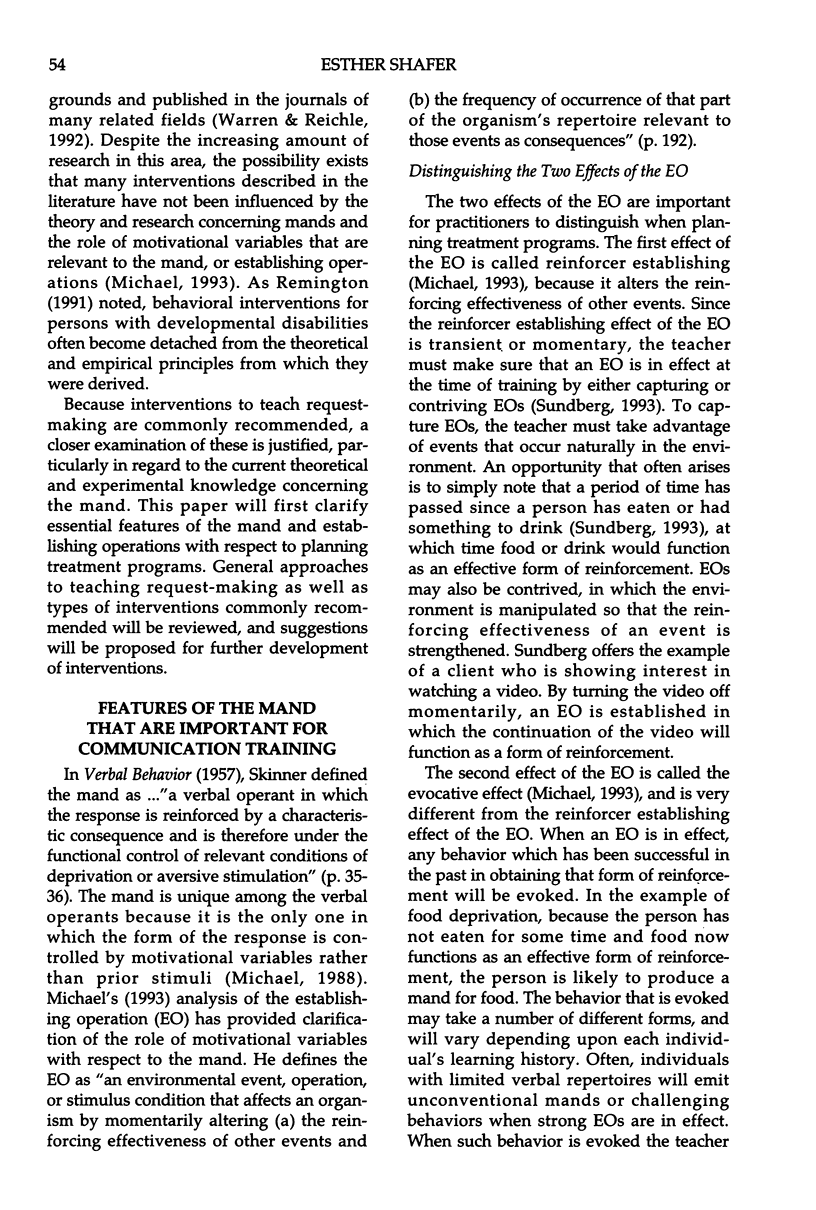
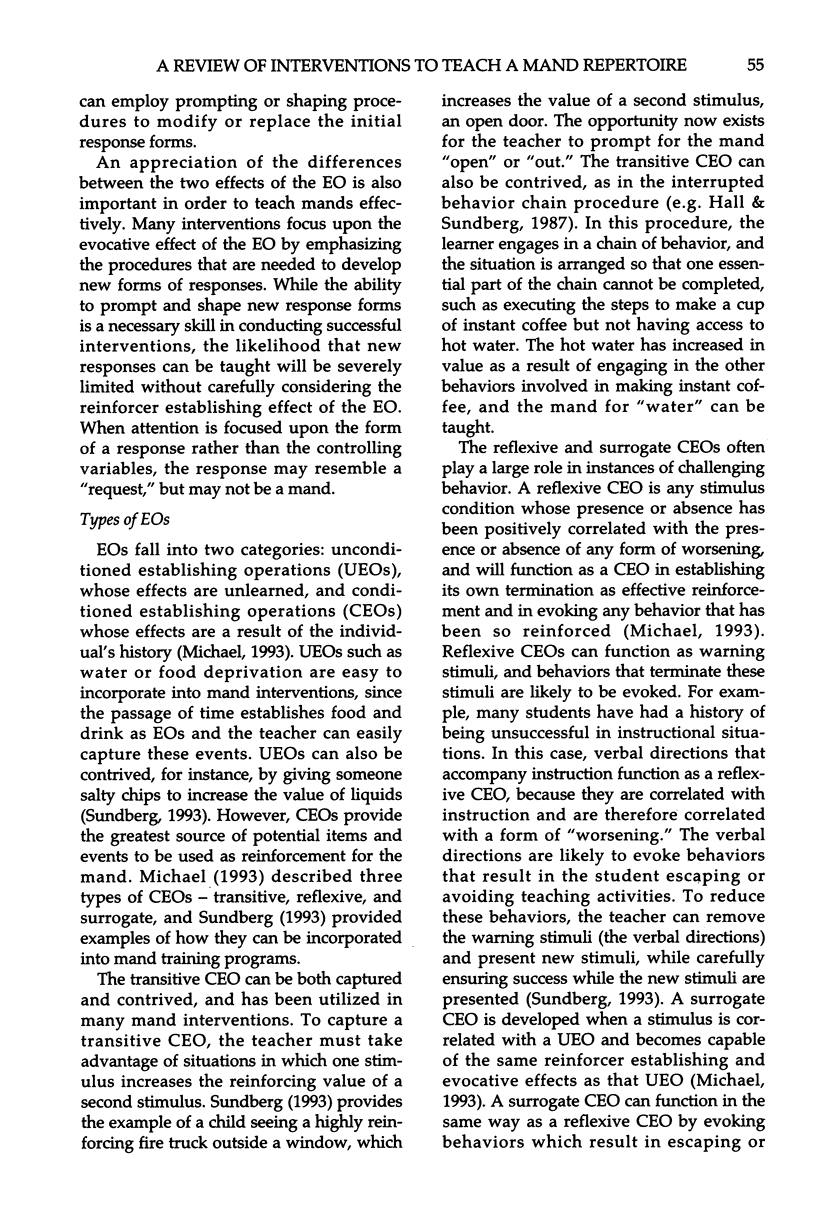
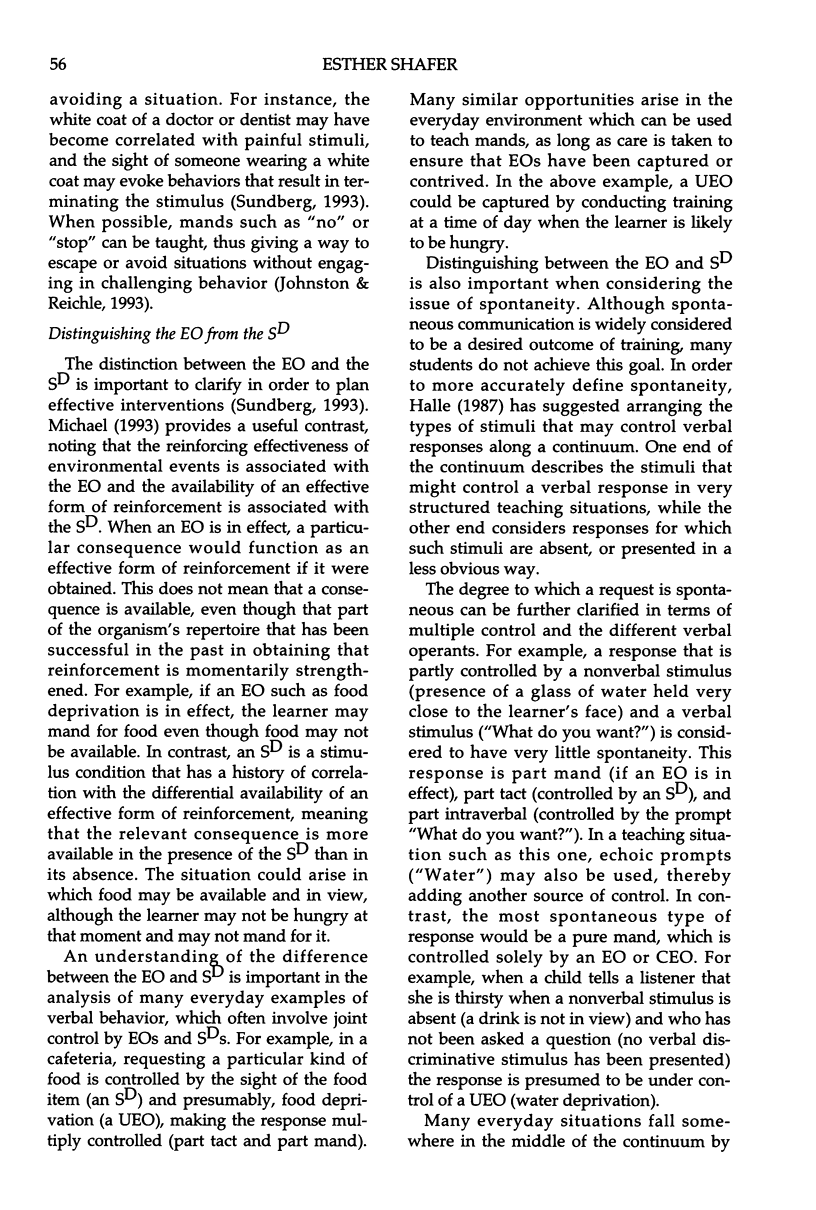





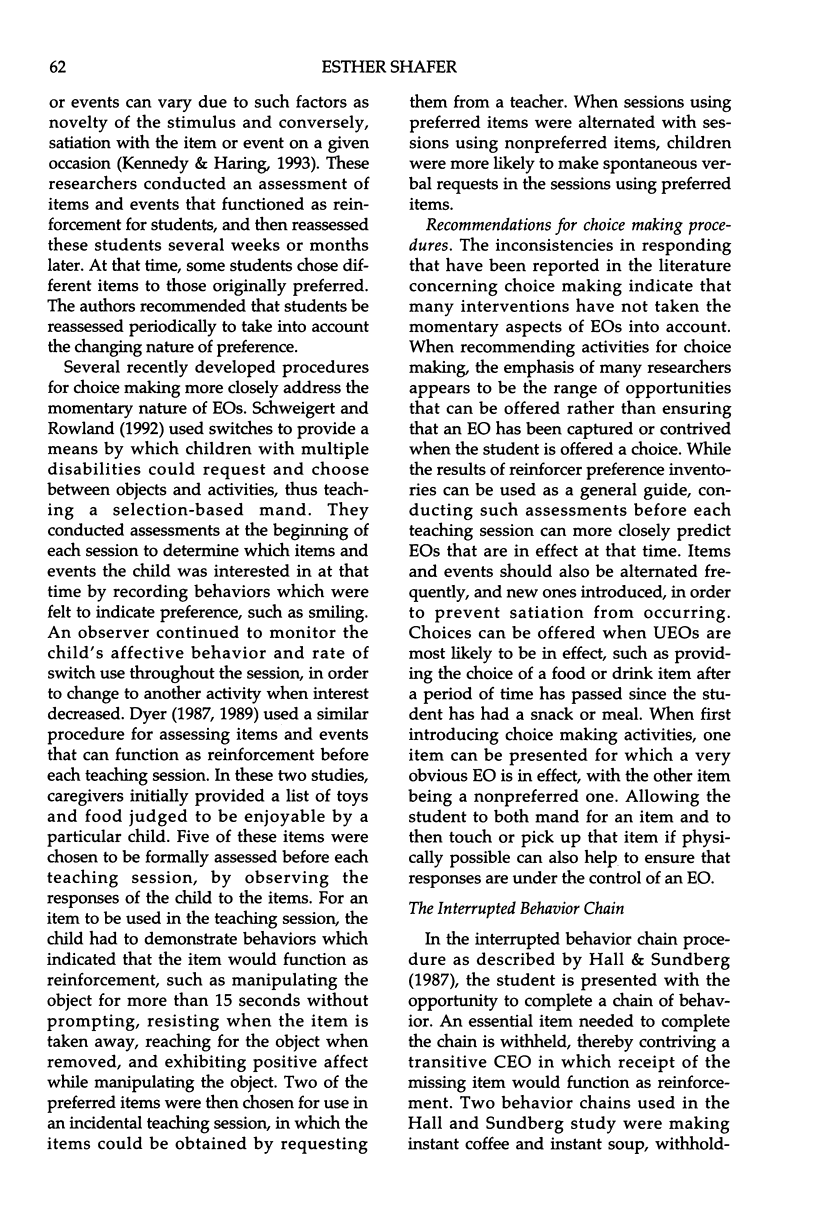
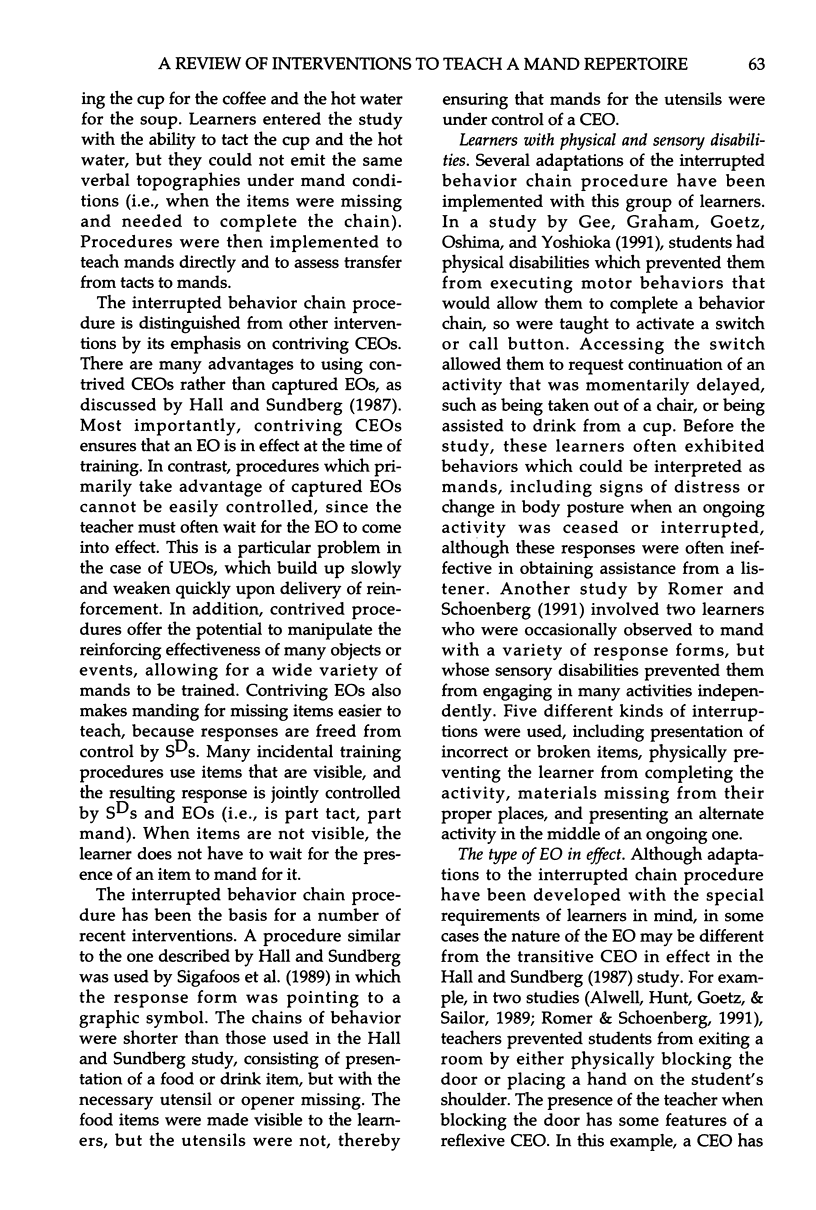
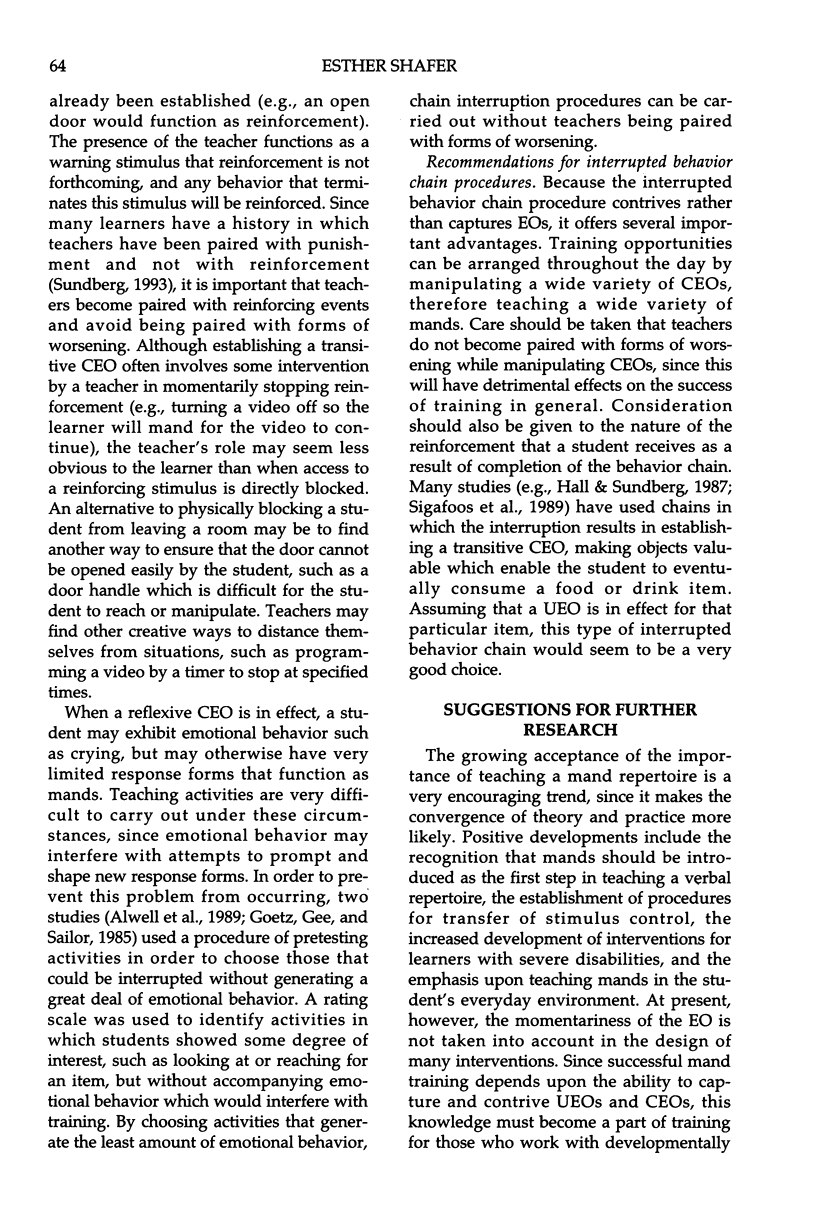
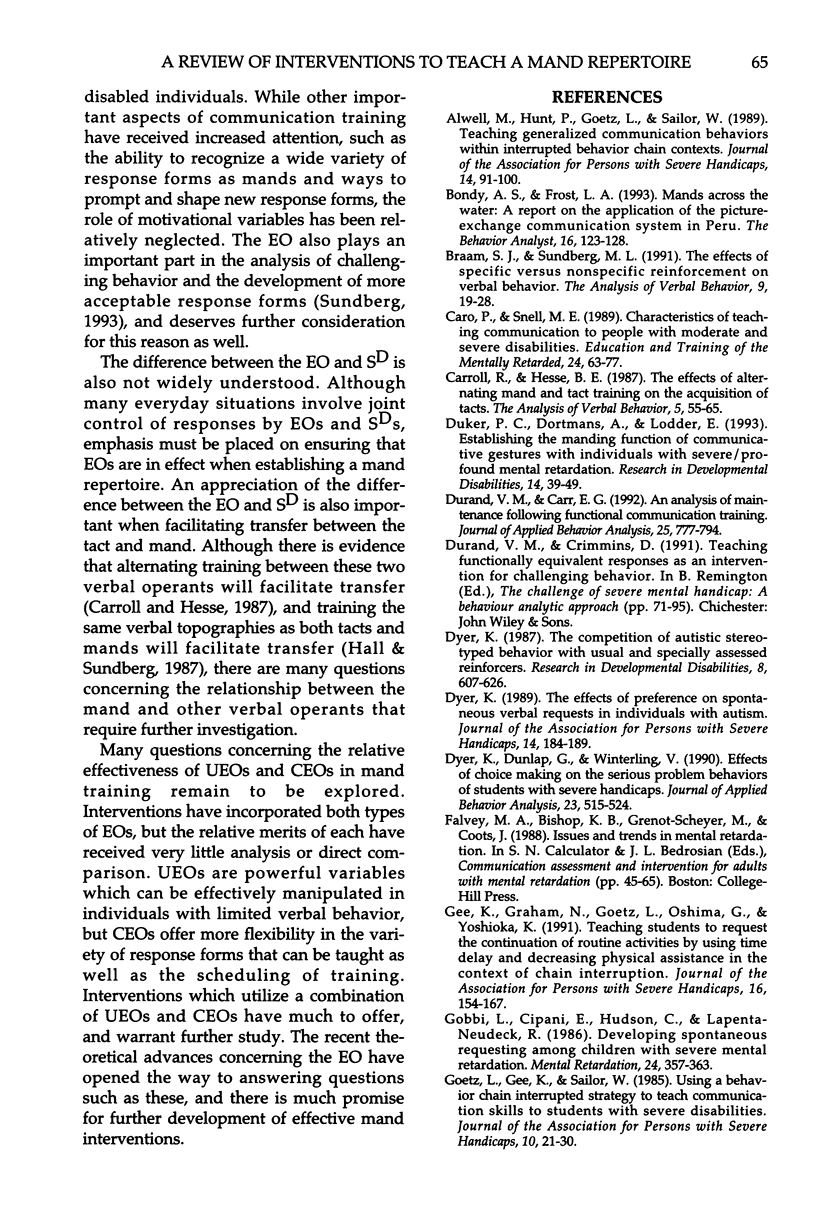
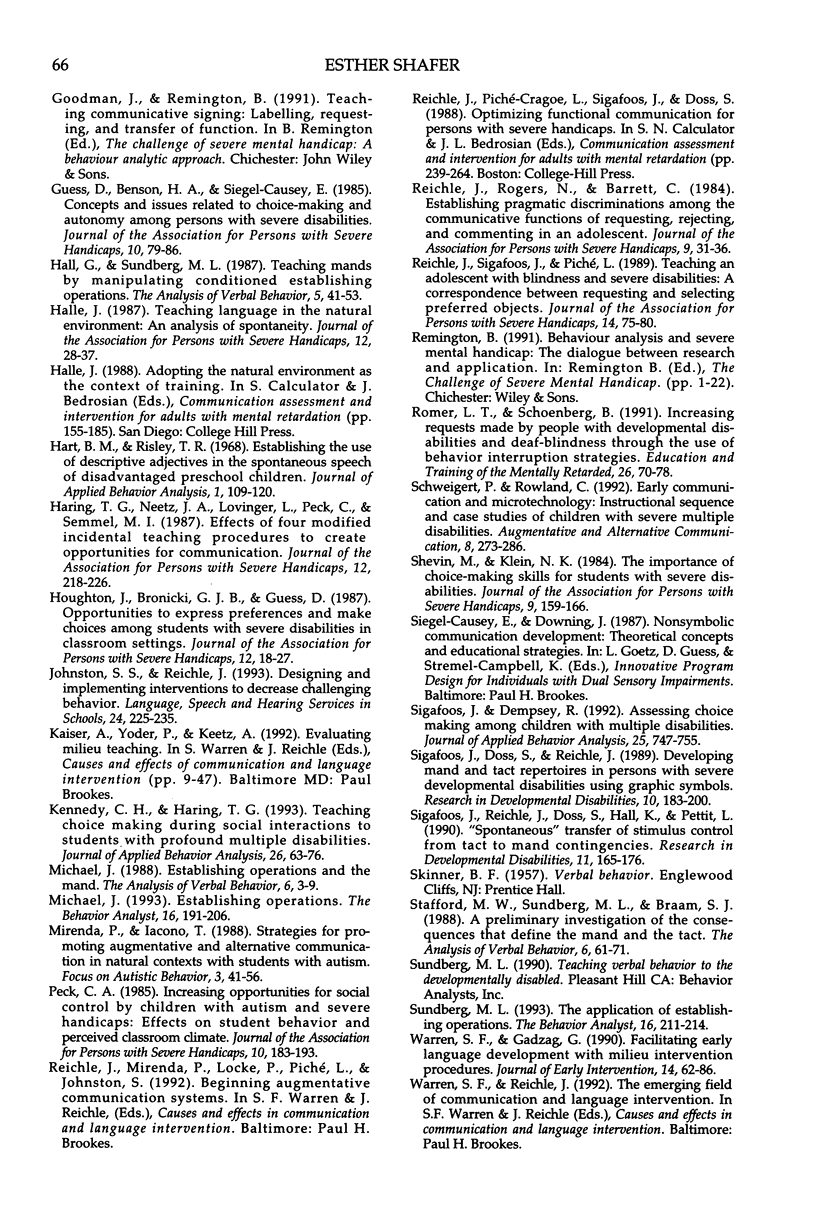
Selected References
These references are in PubMed. This may not be the complete list of references from this article.
- Bondy A. S., Frost L. A. Mands across the water: A report on the application of the picture-exchange communication system in Peru. Behav Anal. 1993 Spring;16(1):123–128. doi: 10.1007/BF03392617. [DOI] [PMC free article] [PubMed] [Google Scholar]
- Duker P. C., Dortmans A., Lodder E. Establishing the manding function of communicative gestures with individuals with severe/profound mental retardation. Res Dev Disabil. 1993 Jan-Feb;14(1):39–49. doi: 10.1016/0891-4222(93)90004-4. [DOI] [PubMed] [Google Scholar]
- Durand V. M., Carr E. G. An analysis of maintenance following functional communication training. J Appl Behav Anal. 1992 Winter;25(4):777–794. doi: 10.1901/jaba.1992.25-777. [DOI] [PMC free article] [PubMed] [Google Scholar]
- Dyer K., Dunlap G., Winterling V. Effects of choice making on the serious problem behaviors of students with severe handicaps. J Appl Behav Anal. 1990 Winter;23(4):515–524. doi: 10.1901/jaba.1990.23-515. [DOI] [PMC free article] [PubMed] [Google Scholar]
- Dyer K. The competition of autistic stereotyped behavior with usual and specially assessed reinforcers. Res Dev Disabil. 1987;8(4):607–626. doi: 10.1016/0891-4222(87)90056-4. [DOI] [PubMed] [Google Scholar]
- Gobbi L., Cipani E., Hudson C., Lapenta-Neudeck R. Developing spontaneous requesting among children with severe mental retardation. Ment Retard. 1986 Dec;24(6):357–363. [PubMed] [Google Scholar]
- Hart B. M., Risley T. R. Establishing use of descriptive adjectives in the spontaneous speech of disadvantaged preschool children. J Appl Behav Anal. 1968 Summer;1(2):109–120. doi: 10.1901/jaba.1968.1-109. [DOI] [PMC free article] [PubMed] [Google Scholar]
- Kennedy C. H., Haring T. G. Teaching choice making during social interactions to students with profound multiple disabilities. J Appl Behav Anal. 1993 Spring;26(1):63–76. doi: 10.1901/jaba.1993.26-63. [DOI] [PMC free article] [PubMed] [Google Scholar]
- Michael J. Establishing operations. Behav Anal. 1993 Fall;16(2):191–206. doi: 10.1007/BF03392623. [DOI] [PMC free article] [PubMed] [Google Scholar]
- Sigafoos J., Dempsey R. Assessing choice making among children with multiple disabilities. J Appl Behav Anal. 1992 Fall;25(3):747–755. doi: 10.1901/jaba.1992.25-747. [DOI] [PMC free article] [PubMed] [Google Scholar]
- Sigafoos J., Doss S., Reichle J. Developing mand and tact repertoires in persons with severe developmental disabilities using graphic symbols. Res Dev Disabil. 1989;10(2):183–200. doi: 10.1016/0891-4222(89)90006-1. [DOI] [PubMed] [Google Scholar]
- Sigafoos J., Reichle J., Doss S., Hall K., Pettitt L. "Spontaneous" transfer of stimulus control from tact to mand contingencies. Res Dev Disabil. 1990;11(2):165–176. doi: 10.1016/0891-4222(90)90033-5. [DOI] [PubMed] [Google Scholar]
- Sundberg M. L. The application of establishing operations. Behav Anal. 1993 Fall;16(2):211–214. doi: 10.1007/BF03392625. [DOI] [PMC free article] [PubMed] [Google Scholar]


